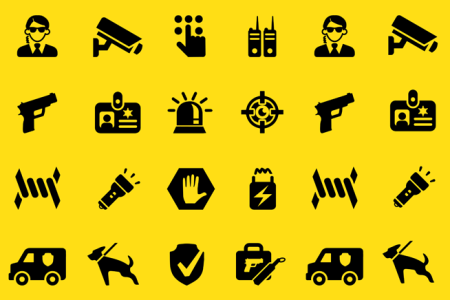As cyber threats rise, physical security still has its place
As cyber security continues to be an area that businesses are focussing their resources on, James Kelly, Chief Executive of the British Security Industry Association (BSIA), discusses why we mustn’t lose sight of the value of physical security measures.
According to the 2015 Information Security Breaches Survey – conducted by PricewaterhouseCoopers – the number of cyber security breaches has increased, the scale and cost has nearly doubled and nearly 9 out of 10 large organisations now suffer some form of cyber security breach. It therefore comes as no surprise that cyber security continues to be a hot topic.
However, it is important not to lose focus on the importance of physical security and how it should remain at the core of any business’ security strategy. Physical security measures should form part of a holistic security strategy that integrates various different security systems and technologies, policies, procedures and plans.
The physical security of a building also has its place in protecting businesses and individuals from cyber security breaches. Whilst much of this crime happens remotely, seldom few would want criminals to gain unauthorised physical access to server rooms, computer hard-drives or sensitive information, potentially containing credentials and passwords.
Therefore, it is worth reiterating the value of some of the basic physical security measures. Doors should, of course, be strong, in good condition and comply with British Standard PAS 24-1 ‘Doors of Enhanced Security’. These should be fitted with good quality five-lever mortise locks, or better still, high security cylinder locks.
Locks should also be fitted to windows, especially those that are on the ground floor or accessible, such as from a flat roof. For added security, it can also be beneficial to fit windows with shutters or grilles, especially if high value items are visible inside.
Beyond this, security fencing and gates should be substantial and well-maintained, with locks fitted at access points. It may also be advisable to think about the installation of bollards or barriers to prevent unauthorised vehicular access.
Combining physical security measures with electronic solutions can further enhance a building’s security. Installing a CCTV system that covers access points, can not only act as a deterrent to would be intruders, but can also provide vital evidence should a breach occur. A monitored intruder alarm system would also be a beneficial addition and enable a quick response to any potential security breach.
Of course, as with any security procurement, it is vitally important to ensure that decisions are made on the basis of quality and long-term return on investment, rather than initial purchase price alone. This is a key theme that the BSIA – as the voice of the UK’s security industry – has been keen to promote to end-users and procurement professionals.
[su_button url=”https://www.securitynewsdesk.com/newspaper/” target=”blank” style=”flat” background=”#df2027″ color=”#ffffff” size=”10″ radius=”0″ icon=”icon: arrow-circle-right”]For more stories like this read the SecurityNewsDesk Newspaper[/su_button]













